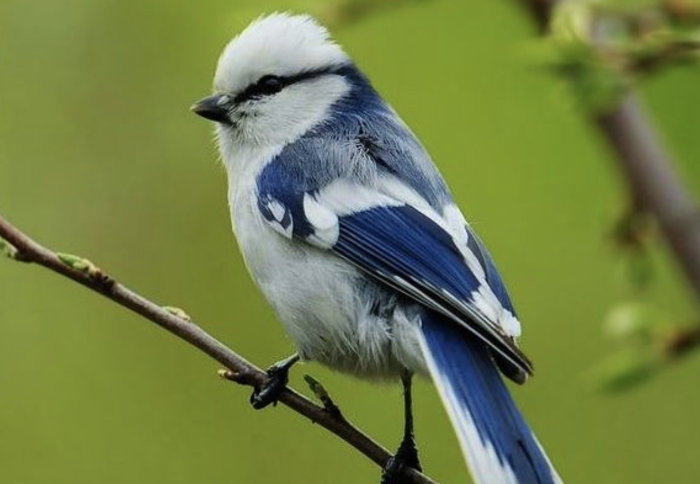Sister species of birds reveal clues to how biodiversity evolves

Extensive new datasets about the world’s birds are helping to solve the riddle of how life on Earth diversified.
By combining global datasets on bird characteristics, citizen-science species sightings and genetics, researchers have begun to answer some key questions in biodiversity. The results are published today in Nature Ecology & Evolution, in two parallel studies that include Imperial College London researchers.
The first paper compiles body measurements and estimates of evolutionary history for hundreds of closely related bird species (called ‘sister species’) to study how new species evolve.

In most cases, new bird species begin to emerge when one population is isolated geographically from others, such as by a mountain range. Later, the diverging species may extend their geographical ranges, bringing them back into contact.
These encounters can play out in one of three ways: the species can interbreed and form a single species again; they can stay separated but with hard borders between their two ranges; or they can continue to expand their ranges until they coexist over a wide area.
What determines whether emerging species stay separate or coexist? The team, led by Dr Jay McEntee at the University of Florida, used a vast citizen-science database of bird sightings worldwide to identify where sister species were seen in the same place at the same time, allowing the timing and extent of coexistence among sister species to be estimated.
Different traits allow coexistence
The researchers found that if sister species had very different traits that affect their way of life, such as beaks adapted to different foods, they were more likely to coexist sooner and over larger areas.
[This] takes us one step closer to understanding how complex ecosystems are formed and predicting what they may look like in the future. Dr Joseph Tobias
In contrast, those with very similar traits appeared not to overlap successfully. The researchers think this is because there is ‘interference’ between the species, such as interbreeding, or competition for resources like food.
Dr McEntee said: “It is often thought that closely related species evolve trait differences after their ranges overlap, as a result of competition. What this study shows instead is that rapid divergence in traits often occurs before species meet, suggesting that this may be a key factor in determining whether they can overlap geographically, without interference.”
How are communities assembled?
The question of what governs whether bird sister species have overlapping ranges is further explored by the second paper, led by Dr Alex Pigot of University College London.
This issue lies at the heart of one of the most long-standing debates in ecology - what determines how communities of species are assembled over time?

In particular, researchers debate whether the most important factors are based on ‘ecology’ – the interactions between species; or ‘biogeography’ – which includes chance events like the formation of geographical corridors or barriers to dispersal, affecting the likelihood of species colonising new regions or continents.
To try and solve this, the research team analysed a range of factors to examine what best explained the extent of geographical overlap between sister species. These factors include trait differences, species dispersal ability, the amount of resources provided by the environment, and whether the sister species live on islands or the mainland.
The yin and yang of community assembly
Dr Pigot said: “The answer is both complex and yet reassuringly simple. Rather than representing contradictory explanations, our results suggest that ecology and biogeography are better viewed as two complementary pieces of the same puzzle - the yin and yang of community assembly.”
The team found that different factors appear to dominate depending on the context, with biogeography being more important in predicting whether sister species are reunited following speciation, but ecology being more important in determining whether they can overlap more extensively.
Dr Joseph Tobias, from the Department of Life Sciences at Imperial and a co-author of both studies, said: “These results have potentially important implications. Understanding the factors controlling patterns of geographic overlap between species takes us one step closer to understanding how complex ecosystems are formed and predicting what they may look like in the future as a result of changing climates and land uses.”
-
Paper 1: ‘Tempo and timing of ecological trait divergence in bird speciation’ by Jay P. McEntee, Joseph A. Tobias, Catherine Sheard, and J. Gordon Burleigh is published in Nature Ecology & Evolution.
Paper 2: ‘The macroecological dynamics of species coexistence in birds’ by Alex L. Pigot, Walter Jetz, Catherine Sheard and Joseph A. Tobias is published in Nature Ecology & Evolution.
Images:
Figure 1: New insights into ecology and evolution are coming from global datasets focused on avian ‘sister species’, including the familiar blue tit Parus [Cyanistes] caeruleus and its closest living relative the azure tit Parus [Cyanistes] cyanus. Photos: gardenbird.co.uk and Krzysztof Blachowiak (Internet Bird Collection).
Figure 2: Two sister species of weedcreeper – Xiphorhynchus elegans (Bolivia) and Xiphorhynchus spixi (Brazil) – with similar ecological traits and abutting geographical ranges. Photos: Joe Tobias.
Article text (excluding photos or graphics) © Imperial College London.
Photos and graphics subject to third party copyright used with permission or © Imperial College London.
Reporter
Hayley Dunning
Communications Division